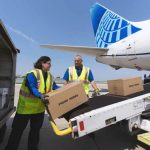How airports adopt and evolve against security threats since the 9/11 terror attacks in the US
Cutting-edge technologies help thwart any possible treats against people, cargo and infrastructure at airports across the world while innovative solutions are enhanced to deal with any unforeseen events.
The September 11, 2001 Al Qaeda terror attacks against the United States completely overhauled the concept of airport security overnight. With nearly 3,000 people killed in a series of coordinated terrorist attacks in New York, Pennsylvania and Virginia, the world was left in a state of shock. No one expected anything dastardly as this. No one expected that global terrorism could make such scary inroads.
From then on, airport security has undergone a sea of transformation and has largely been responsible to prevent any such attacks. But some challenges remain.
In the US, 9/11 saw the birth of the Transportation Security Administration, popularly known by its acronym TSA. The agency is designed to prevent any disruption or use of airport for any terrorist or similar attacks in the future.
With tens of thousands of people joining TSA and committing themselves to strengthening transportation systems while ensuring the freedom of movement for people and trade, the world started looking at airport security in detail.
From what was random frisking of an individual to looking up ones’ cabin baggage, airport security has gone on to become extremely complex, some of it unseen to the passenger or to the freight forwarder. There are different layers of security with personnel doing the checks, even while technologies are at work trying to detect if anything is amiss.
Airport security, besides taking care of normal duties of seamless movement of passengers and cargo, is 24/7, 365 days of uninterrupted watch as global terrorism is here to stay.
Layered security systems
As mentioned earlier, airport security is layered with armed and unarmed personnel; automated systems; detection technologies; canine teams; human intel, among others. The TSA’s security environment is a classic example of how to stay ahead of an evolving threat landscape.
While TSA has a presence throughout the airport environment, the travelling public is only aware of them at checkpoints, but that is not all. TSA deploys cutting-edge technologies which include explosives trace detection (detects if an individual has come in contact with even minute amounts of explosive material); millimeter wave advanced imaging technology to safely screen passengers for metallic and non-metallic threats, including weapons and explosives, which may be concealed under clothing without physical contact; credential authentication technology, etc.
Cutting-edge technologies
TSA’s air cargo screening is currently more secure than it has ever been with 100 percent of cargo on flights departing US airports and 100 percent of identified high risk international cargo undergoing screening.
TSA regulates use of air cargo screening technologies through an approved technology list. Airlines and other TSA-certified entities perform cargo screening activities and purchase their own screening technology from the list.
The need for smart security systems needs no emphasis, its given. The former Director General of Airports Council International (ACI), Angela Gittens in an article has talked about ‘Smart Security – Vision 2040’ where innovations such as artificial intelligence, the use of big data and stand-off detection will radically transform the approach to aviation security and the way passengers, baggage and cargo are screened.
“Aviation security has typically been one of the slower elements in society to introduce innovation. Vision 2040 is all about changing this situation, challenging the way we do things today and creating a much-needed quantum leap towards sustainable passenger and baggage screening.”
Indian scenario
Airport security is high priority and it’s been addressed across all airports, big, medium or small in varying measures. Automation is happening in many countries, albeit at its own pace, even as technological advancements have some amazing equipment.
In India, full body scanners are being deployed in major airports such as Delhi, Bengaluru, Mumbai, Hyderabad, Kochi, Pune and Chennai. Presently, the CISF uses hand-held metal detectors and door metal detectors besides using CT and X-Ray machines for detecting any metal as part of airport security.
“The full body scanner system is under the process of implementation. The new system not only detects metals but also exclusive substances. It is still under trial. The full body scanners will be deployed in the airports across the country in a phased manner,” said Gyanendra Singh Malik, the Additional Director General of Central Industrial Security Force (CISF – Airport Security). The Bureau of Civil Aviation Security, a government of India body, oversees the security apparatus in airports.
Importantly, the CISF has setup the Airport Security Control Centre (ASCC) in New Delhi, first of its kind, to have an integrated command for aviation security across the country considering that India has nearly 500 airports with about 150 operational ones.
The robust security mechanism enables the CISF to monitor security and passenger and cargo movement at airports, and be able to respond, almost in real-time, to possible terror threats as well as congestion. The CISF conducts regular training programmes for its personnel and one of the programmes is Situational, Holistic Awareness and Risking Potential (SHARP).
At the core of security, besides technology, one critical element remains people and their performance. Deploying the right human resources is the cornerstone of good security management.
This includes recruiting the right resources, training them, certifying them (where appropriate) and making sure they are motivated to stay in the organization. Once hired, performance should be monitored and measured to make sure it meets the airport’s security objectives.
Pre-Loading Advance Cargo Information, key to cargo security
Apart from passenger and baggage screening, the airport has one big task of ensuring secure and safe movement of massive tonnage of cargo on a continuous basis. To combat with the ever-increasing security threats, authorities are continuously enhancing their cargo security programmes.
The importing country acquires advance shipment data to assess whether an intervention is needed and if so, what type of appropriate actions should be taken based on the assessment results (e.g. immediate withdrawal of the shipment from the supply chain, additional inspection or information).
Responding to security threats and incidents, the World Customs Organisation and the International Civil Aviation Organisation jointly introduced in 2019 an additional layer in the management of air cargo security risk.
As a result, Customs and aviation authorities are increasingly enforcing new security protocols to identify any potential ‘bomb in the box’ before shipments are loaded onto aircraft. This additional security layer comes on top of existing security regimes based on pre-arrival Advance Cargo Information (ACI) requirements. The new security regime, focused on assessing the risk prior to shipment loading, is called Pre-Loading Advance Cargo Information (PLACI). One of the key challenges for the industry is to comply with multiple PLACI initiatives while maintaining the speed and flow of cargo.
The two entities have released a revised supply chain and secure mail publication “Moving Air Cargo Globally”, which describes the roles and responsibilities of these various entities, and highlights how they can work together effectively to secure air cargo and mail within the regulatory framework.
“Maintaining operational efficiency and commercial viability has always been at the cornerstone of ICAO’s efforts towards improving aviation security, as demonstrated by the tremendous adaptability and resilience the air cargo sector showed during the COVID-19 pandemic,” remarked ICAO Secretary General Juan Carlos Salazar, noting that the understanding of the nature and level of related security threats – and how to combat them – has also significantly improved in recent years.
“’Moving Air Cargo Globally’” will help to support the implementation of robust and harmonized standards worldwide, while fostering the improved air transport connectivity which is so critical to the future sustainability of societies and economies everywhere.”
The continued surcharged security environment around the globe indeed has made airports strengthen security of vital installations. It is never a moment of taking it easy.














